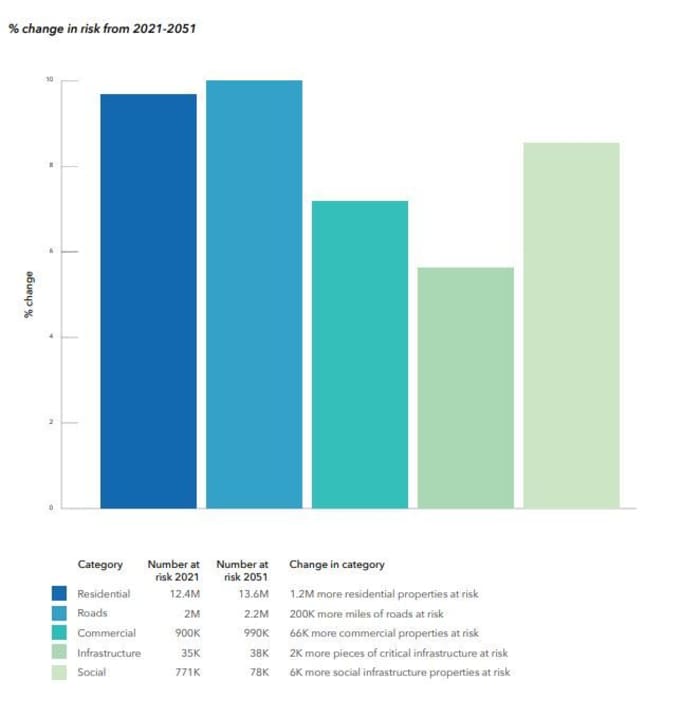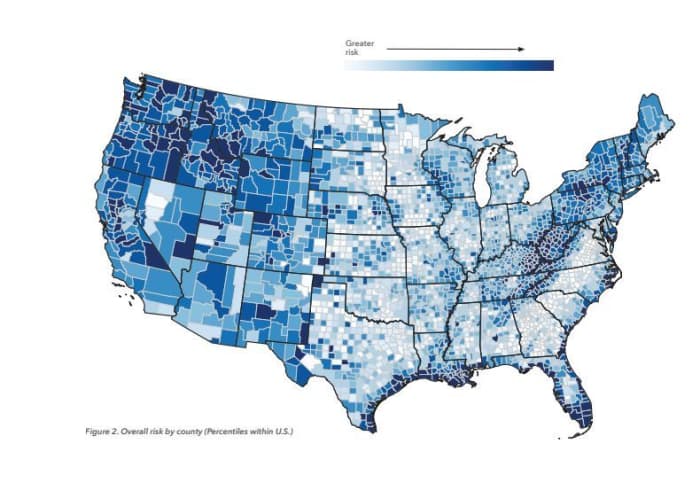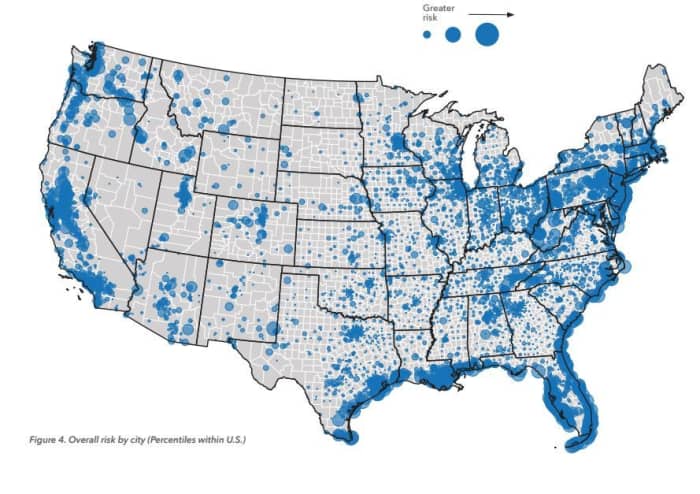This post was originally published on this site
Bailing out basement family rooms or navigating washed-out roads is harrowing enough, but few Americans may realize the risk of flooding for utilities, hospitals, airports and other vital services if climate change persists, a new report says.
Nearly a quarter of U.S. critical infrastructure could be overtaken by flooding if unchecked global warming produces more frequent and intense weather events that dump heavy amounts of rain and produce dangerous storm surges, says the report, produced by First Street Foundation. It’s a Brooklyn-based nonprofit that says it wants to make climate-change risk clearer for the public.
Roughly 14% of Americans’ properties face direct risk from major storms, earlier data shows, but the new study, which also projects its risk out 30 years, shows this danger extends beyond private property.
The report’s analysis found that over the next 30 years, due to the impacts of climate change, an additional 1.2 million residential properties, 66,000 commercial properties, 63,000 miles of roads, 6,100 pieces of social infrastructure, such as museums or schools, and 2,000 pieces of critical infrastructure, such as fire and police stations, will also have flood risk that would render them inoperable, inaccessible or impassable.
“By applying research on depth thresholds and comparing them to flood data and probability metrics, we can determine roughly the extent of flooding that would cause a road to be impassable to cars, or a hospital to be shut down,” said Dr. Jeremy Porter, a lead researcher at First Street Foundation.

Source: First Street
The most threatened areas are concentrated along the coast of the southeastern U.S. and in Appalachia, which is dappled with rivers. The report found that 17 of the 20 most endangered communities are in Louisiana, Florida, Kentucky and West Virginia.
Targeted higher-risk cities include the major population centers of New Orleans and Miami, while St. Petersburg and Tampa, Fla., along the Gulf of Mexico, made the list. Atlantic Ocean cities Cape Coral and Fort Lauderdale, Fla., were included, as was Charleston, S.C.

Source: First Street
The city list includes more representation from the mid-Atlantic region, with Hampton, Va., among the top 20 at-risk cities. Sacramento, Calif., Fresno, Calif., and Eugene, Ore., headline the risk in cities on the West Coast.
The roughly 160-page report offers details for all major cities and most U.S. counties, assigning a risk probability for roads, private homes, commercial buildings, utilities and municipal facilities such as schools, police and fire stations and wastewater treatment plants.

Source: First Street
The First Street report hits as Congress is debating whether to put trillions of dollars toward rebuilding aging infrastructure, including fortifying it against extreme weather and flooding. Lawmakers are still haggling over the cost and focus points of the broad legislation, but Democratic leadership, which holds the narrow majority, has shown optimism that some version of the House and Senate bills can advance by month’s end.
U.S. infrastructure received an average grade of C minus, according to the 2021 report card released earlier this year by the American Society of Civil Engineers.
President Biden has pledged a “whole of government” push toward net-zero emissions and meeting global warming temperature targets by bringing more renewable energy
TAN,
on line. He has also approved continued permitting for fossil-fuel
WBS00,
growth. Biden and other major world leaders gather in Glasgow in early November for key climate talks.
First Street first made waves in 2020, when it leveraged grants secured by climate philanthropies and data-sharing agreements with real-estate firms. Its broadly released report last year looked at flood risk of individual properties using data typically only available to insurers. For the public sector report just issued, First Street included federal data mapping key facilities and services.

